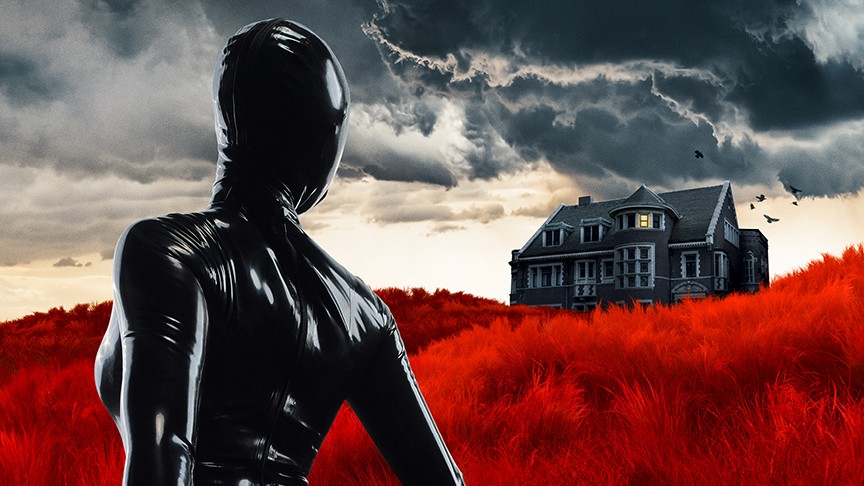
If you’re at all squeamish, then perhaps the American Horror Story anthology series is not your binging jam. On the other hand, if you crave the sight of blood, gore, and the macabre, then you have found your home with the Ryan Murphy family. The recent offering, American Horror Stories (AHS) and American Horror Story: Double Feature from FX, fulfills these bloodthirsty needs and more to the nth degree.
The seven separate tales of AHS features the return of Rubberman wreaking havoc on the living in the haunted American Horror Story house. VFX Supervisor John Decker started his gig with American Horror Stories when he got the call to join the mega-successful franchise. With over 25 years in the visual effects industry, most recently creating illusions for five seasons of Marvel’s Agents of SHIELD, Marvel’s Runaways, and 9-1-1 Lonestar, his main directive was to create seamless visual effects that never took you out of the story. His efforts were embraced as he continues making magic in season 10 with the series finale Double Feature.
Below The Line spoke with Decker, who discussed how throat slashing and blood spatter are done in AHS, along with the special effects makeup team who have their proprietary recipes. Flaming fire is another Decker specialty, having worked with lots of it on the 9-1-1 series. Sworn to secrecy, he did reveal some of the visual tricks in Double Feature from Part 1: Red Tide, where it’s wintertime in the Cape Cod town of Provincetown, but are the actors physically there in the sleepy seaside village?
Due to Covid’s travel restrictions, Decker explains how he finessed certain scenes, starring American Horror Story alumni Evan Peters and Finn Wittrock.
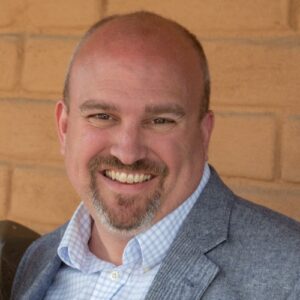
Below The Line: How did you come to join the Ryan Murphy world?
John Decker: I met Ryan Murphy, and he’s very nice, but I don’t really interact with him that much. He oversees everything, but I mainly work with the showrunner and the director. I started in November 2020. I met the showrunner, John Gray of Stories, in passing when I did a half-season of 9-1-1 Lone Star, another Ryan Murphy show. We had a familiarity, but we hadn’t worked together directly very much. Now we’re very comfortable in having the conversations about doing visual effects sequences.
BTL: Did working on 9-1-1 visual effects enhance your knowledge of making fire for American Horror Stories?
Decker: We have a library of fire elements, where this is a wall on fire or a ceiling on fire from Chicago Fire and the 9-1-1s. In episode three “Drive In” the interior was shot on a stage where we can’t do fire. We set up a lot of interactive LED panels that could alternate between yellows and oranges and bathe the room in that fiery glow. We talked with the actor John Carroll Lynch, who played Larry Bitterman, about where he should be looking at certain moments for events we were gonna time in, so there was a little bit of choreography about where the fire would be around him. We basically borrowed this sequence from 9-1-1 using the artists on their team.
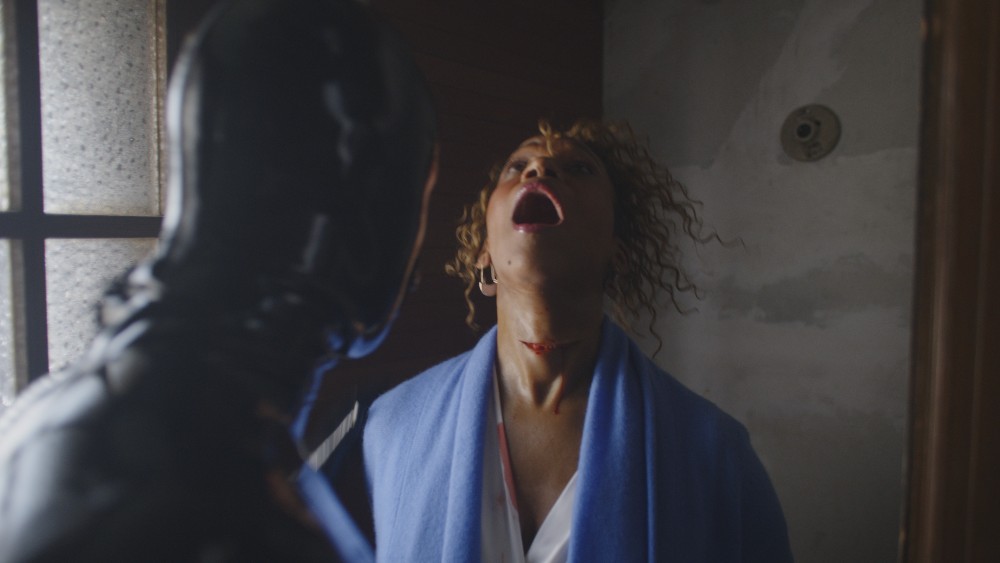
BTL: How do you achieve the throat slitting scenes in American Horror Stories?
Decker: We have a really good special effects makeup department run by Jason Hamer. We work with Jason and figure out what could be him and what could be us and where we sort of meet in the middle to create the best thing. That shot (illustrated below) actually represents a take of her without the neck appliance and then we shot a take of her with the neck appliance where you can sort of see some of the stuff around the edges. We blended those two shots together so what you see is her real neck, but the stuff that comes out is the blood from the makeup appliance.
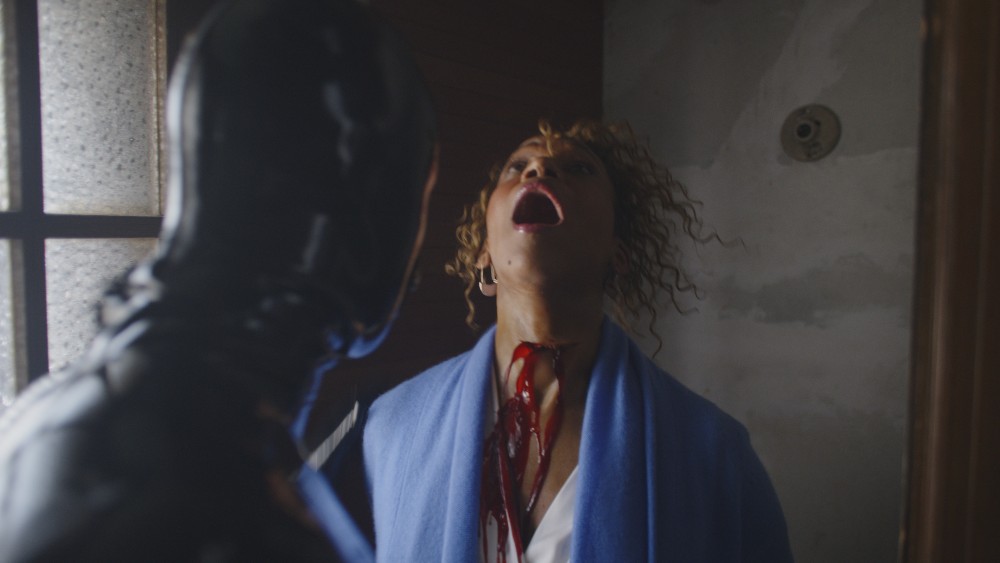
BTL: How do you collaborate with the special effects team, especially when it comes to blood?
Decker: There are two paths that we go. We work with them in terms of how much blood they can do at the moment when we’re shooting. Sometimes it’s a really expensive period costume that we can’t get blood on it, so we’re gonna add blood in the visual effects world. There is usually an element of the reset time involved once you start getting bloody everywhere, we can’t slow down shooting to clean it all up and start all over. That’s usually when they come to us because they can’t splatter blood all over the walls five times. I don’t actually know what their blood recipe is because they have these mysterious gallon jugs. There’s a few different tricks if you want fleshy bits in the blood, there’s like strawberry jam and mashed bananas work good because they represent the fatty components if you’re blowing the back of someone’s skull off. When we are doing blood it’s a plain backdrop of a white wall or green screen wall that we are splattering blood onto. We then take that blood and manipulate it and lay it into whatever footage they’ve shot. At this point, after 10 seasons, we have a fairly significant library of blood shots. We have not had to shoot any new blood this season because we have 10 seasons of blood to draw on. We have shots where it’s coming at you or it’s running off to the side, or it’s running down the walls. Sometimes in the editing room, there’s a continuity question where we need to have that squirt start earlier so it matches and just sometimes they want more blood than they were able to do on the day.
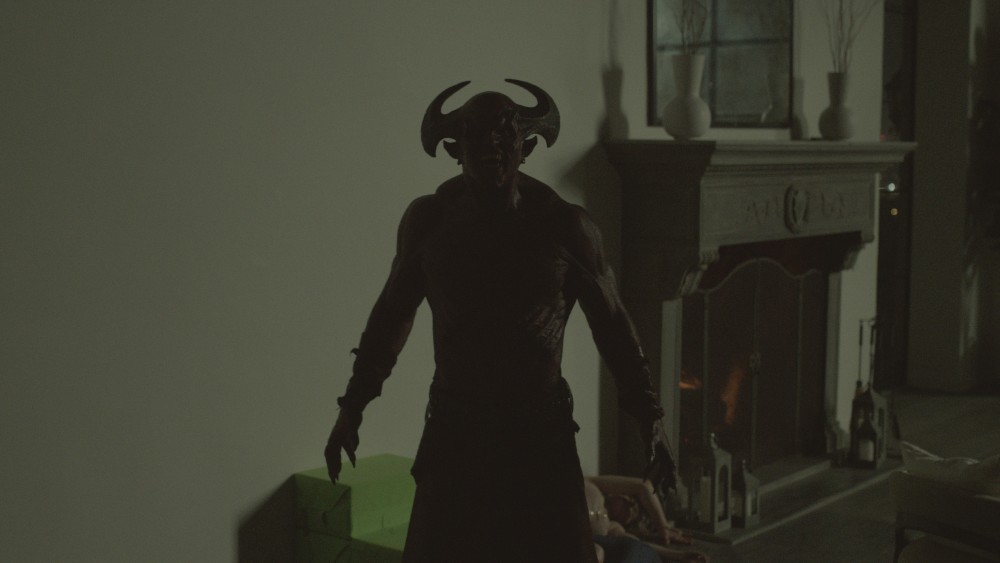
BTL: Which visual effect did you really sink your teeth into for AHS?
Decker: The one we’re most proud of is the demon Ba’al, because that’s a nice intersection with design and collaboration with Jason Hamer who did the torso and his face mask. We got to do the wings. I went to Jason’s shop and see what he was building and we talked about the design of the wings and what he would be able to do practically. It was basically two giant sticks with green tape on them. Everyone had to understand on set how big the wings were and where they would be so cameras could frame them. We knew the demon couldn’t fit in the corner because he’s got really big wings (laughs). The team really enjoyed that and they looked really cool. The green sticks are on my porch, but the wings are digital and can be used next time Ryan Murphy needs the demon. The actor who played him is Dane DiLiegro, and he’s a 6’9” muscular man who does a lot of creature work and giant monsters. He was the nicest guy to work with and very entertaining.

BTL: Let’s talk about Double Feature Part 1: Red Tide. Which effect are you most proud of creating?
Decker: We shot a lot of that in Los Angeles, and then we did a location shoot in Provincetown for two weeks to get most of the exteriors. A lot of the work that we are doing visual effects-wise is blending those two locations together. Some of our lead actors were not able to travel earlier in the year, so in many cases, you see an actor in front of a Provincetown background but they were shot months apart. I’m very happy with how some of those came out because you would never know. You would never know that background was shot in Provincetown in early March, and then we shot the actor on a stage or on the backlot two months later. In the second half of Double Feature, Death Valley, which is still in its secret zone, there’s gonna be a lot going on.
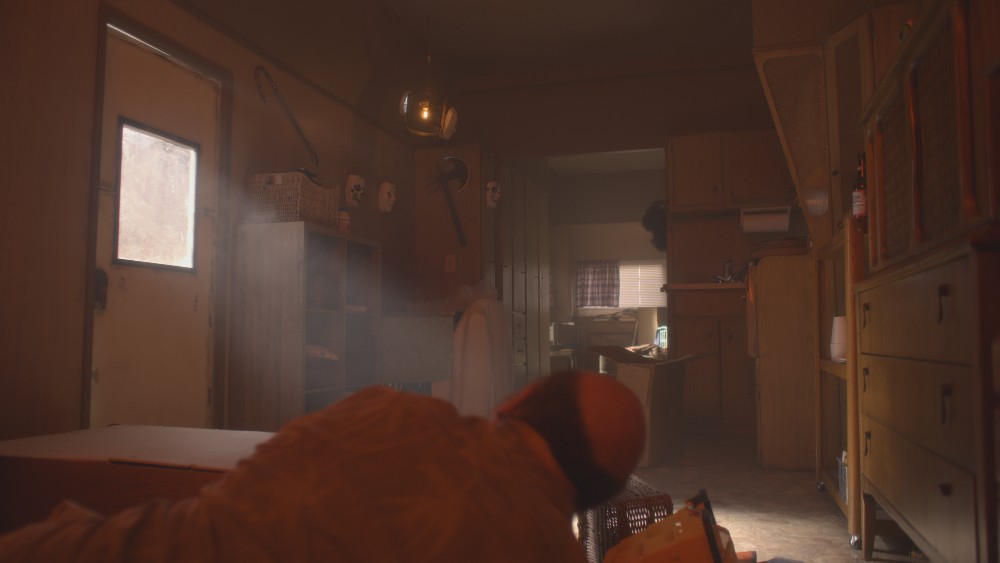
BTL: How do you logistically achieve that effect in the episode “Thirst”?
Decker: It’s a lot of planning working with the director Loni Peristere. We worked together on Buffy the Vampire Slayer 20 years ago, so for us, it was a little bit of a reunion. We had been familiar and he has a background in visual effects, so we could just talk through, “What’s the look we’re trying to achieve?” When we got to Provincetown we would place a stand-in up there, someone in the costume and the right height as the actor, and we would line up our shots. We would take down a bunch of notes of what angle is the camera, how far away are we from the actor, what is the lens, remember where the sun is. We wrote all that down and when we get to the stage in California, this is when the sun comes up and this is when the sun comes over there, so we should plan to shoot the actor between 12:30 and 2:00 and he should be about this high off the ground. In the scene where Harry (Finn Wittrock) goes to meet Austin, Evan Peters’ character, Evan is out on a balcony. That balcony was shot in Provincetown and Evan Peters was shot on the backlot at Fox. Sometimes you look at that and think it’s all gonna work but you don’t really know until you put it together and you totally believe that Evan Peters is on the balcony, that’s great.
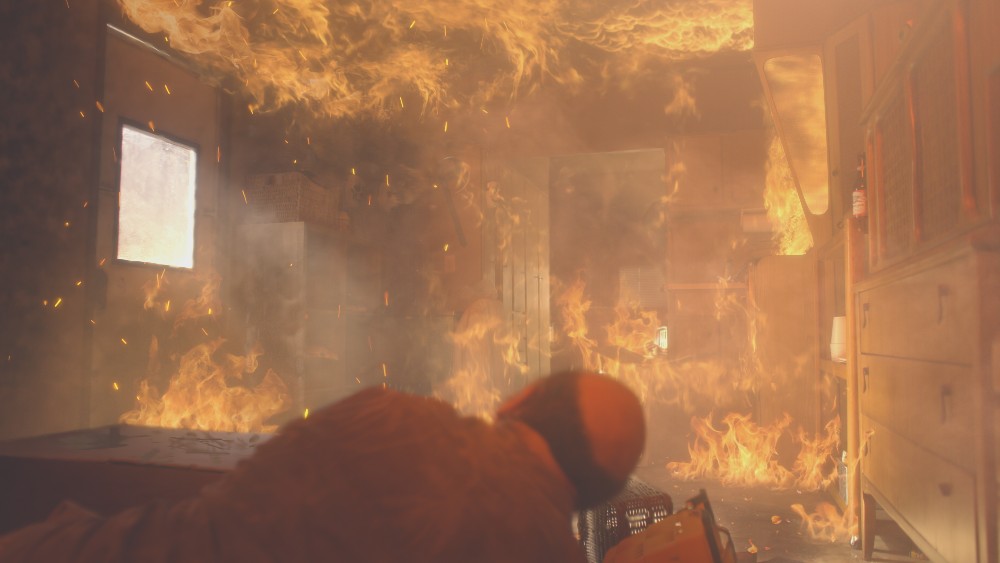
BTL: Would you say matching those elements were your greatest challenges this season in Double Feature?
Decker: A lot of the challenges of the first half of Double Feature have been those logistics. We also shot in Oxnard for some of those flat beaches to match out for the Cape Cod beaches. Then it’s incorporating architectural and landscape elements from Cape Cod onto those beaches so that everything connects together. People who have been to Provincetown and Cape Cod know those locations, but you don’t feel like some of it was shot in California and some of it was shot in Oxnard. You believe it’s all in the same place. We were able to create this seamless story that takes place in Provincetown even though so much of it is scattered all around the country. I have a good team of people who help me remember and taking lots of photographs and taking lots of notes. The fact that we can shoot a background and a green screen element of an actor three months apart and you the viewer don’t even know. It does match up, and that is the thing I’m most delighted by. Those are the most rewarding kind of effects for me, where you can achieve something that is invisible in the storytelling that just allows you to immerse yourself in the world.
American Horror Stories can be watched streaming on FX on Hulu. Photos courtesy FX — click on images for larger versions.





